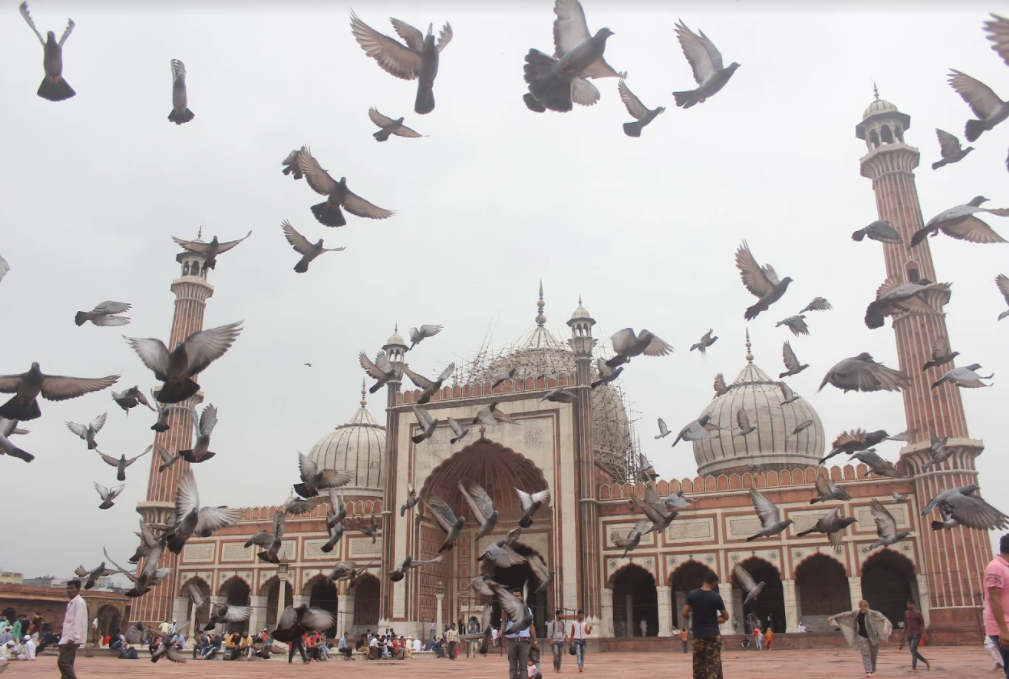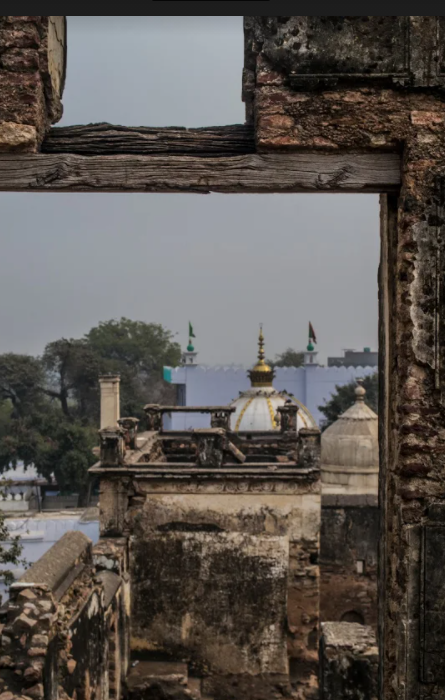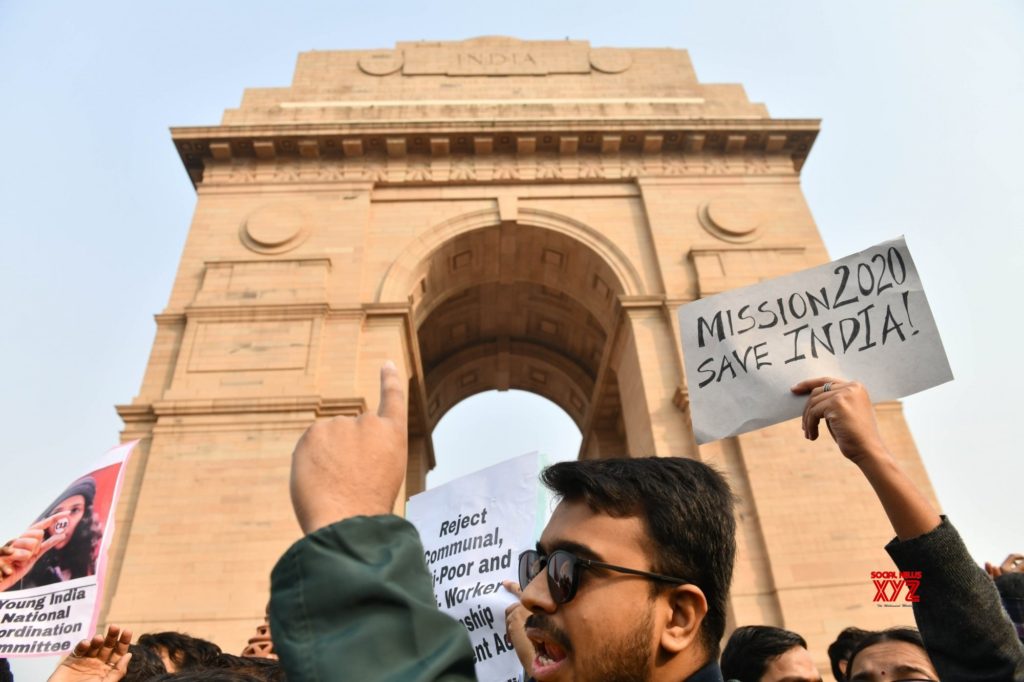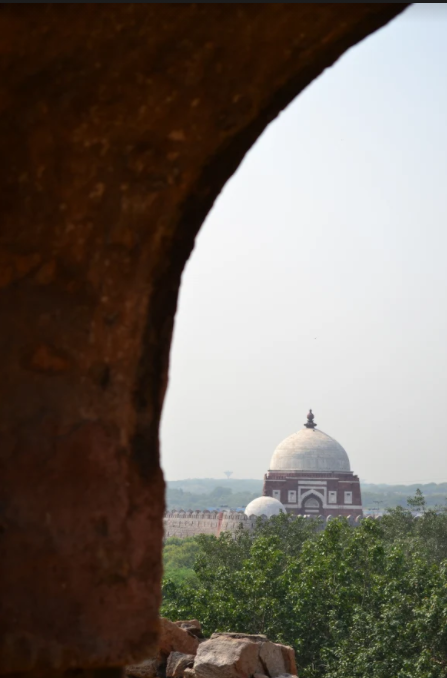
‘Delhi’- conjures a lively metropolis of narrow, populous lanes and congested markets. It also conjures up a city that is centuries old, still breathing, interspersed with mighty forts that are the remnants of powerful sultanates, crumbling houses and dilapidated alleys that still preserve what seems to be fading away from memory.
Delhi has been fought over, claimed, lost, maimed and wounded, reclaimed and its story has been told in different ways through each monument that it houses. As Syed S. Shafi writes, the present metropolis, sometimes called the ‘Ninth Delhi’, envelops all the earlier ‘Dillis’ that flourished and vanished. With a rich variety of tangible heritage to ponder over the immediate past while many amongst continue to be important contributors in shaping the contemporary socio cultural fabric of the diverse communities living across Delhi.
Beyond the poetry of architecture, a plethora of narratives lay siege to Delhi, crafted over centuries. Especially in case of monuments, these have either been appropriated by the new political leadership to establish their own brand of power; or have been acquired by the public and encompassed in their everyday lives as living historic spaces. Delhi has often been called a ‘bewafa shahar’- ‘disloyal city’, as it has been destroyed and rebuilt by several dynasties in their attempt to symbolically seal their victory over their predecessors. Nehru called Delhi “the grave of many empires and the nursery of a republic.” A city where every other building is replete with historical significance, we can trace a journey through ages comprising bright and dark times.
The site of the city itself has been continuously inhabited for over nine hundred years. As the city transitioned from Khandavaprastha or Hastinapur to Dilli to New Delhi, it has witnessed the rise and fall of empires over generations and the merging of different cultures and traditions. The seven historical older cities of Delhi stand in mute testimony to the glory of these rulers and historical processes that shaped the lives of people and the monuments bear those imprints. Historians trace these “Seven Older Cities of Delhi” which developed around the fortresses of each dynasty that ruled Delhi from 1100 AD through 1947 AD. Qila Rai Pithora built in the reign of Prithviraj Chauhan, symbolised the Indian rulers’ resistance against the Persian invaders. It was with Mehrauli built by Qutubuddin Aibak, that the impact of Islamic culture and faith began in Delhi. The Afghani Turkish influence came to India with the Khilji Dynasty’s Siri fort in the Hauz Khas area. Continuing with the Sultanate architecture, we have Tughlaqabad and a smaller city, Jahanpannah, which were succeeded by Firozabad, Shehargarh and Shajahanabad built during the reigns of Firoz Shah Tughlaq, Sher Shah Sur and Shah Jahan respectively. These older cities signifying the introduction of new architectural styles and cultural influences which went on to be integrated with the native styles, are a testament to the fact that Delhi has been shaped just as much by its refugees as by its immigrants. The fear of persecution drove people from Iran and Turan who eventually sought refuge here along with the Timurid prince Babur who set up an empire whose legacy still lives on in the streets of Delhi, in the cuisine savoured by millions around the world. Delhi, thus has ever been a cultural and social mosaic of amalgamation, enmeshed in the nuances of its times.
A centre of robust trade, the city has been a confluence of merchants from far away lands who eventually settled here, bringing with them a host of traditions and beliefs that slowly mingled with the indigenous customs.

The monuments of Delhi (especially those in the four main parts of city) speak of such tales. The lofty minarets like that of Mehrauli, comprising the Mehrauli Fort, the Qutb Complex, the Mehrauli Archaeological Park and Lal Kot, speak of grand sultanates. However softened by the Sufi architecture that speak only of love, the Khwabgahs that see millions of people even today send out the loud message that brute force can be surpassed by love. As devotional movements like Bhakti and Sufi spread northwards the ideals of love for God and compassion won hearts of people irrespective of their religious, cultural or social beliefs and engulfed the city completely as can be seen in the age old complex of Nizamuddin constituting the settlement that sprang up around the time of Nizamuddin Auliya and the tombs and dargahs built around it even today. Shahjahanabad, in a different light, sprang up essentially as a pedestrian city around the Red Fort with the beautifully designed Chandni Chowk and the Fatehpuri Masjid. While Lutyens Delhi with the Kingsway, the Queensway and the Viceroy’s house exemplify British imperialistic notions of power, the refugee camps, that have sprawled up on the other hand, are a silent reminder that the city has had a not so happy past, the uprooted homes during partition is yet another facet that is often missed out when talking about the city, ironically how the residents of these houses might have been a part of the city’s long illustrious history but had been abruptly erased one fine morning.
The culture of Delhi is a composite one, with different strands knotted together to provide a homogeneous blend with various flavours and it is this culture that is etched in the architectural brilliance of the city. Scholars have long agreed that monuments have their own discourses just like textual sources, however to have a positivist reading of such discourses would defy the purpose of enquiry. It is not enough to situate a monument in the context it was created, because monuments being a symbol of power stood for legitimacy and authority, however aspects like the erosion of such authority, the shifting balance of power needs to be taken into consideration because apart from the symbolism these monuments were also constructed to craft ideologies. Thus the debates on the Hindu motifs and Jain symbols in the Masjid-i-Jami in the Qutb Complex and the very recent flag hoisting on the Red Fort bear testimony to the changing narratives and the notion of memory around these monuments. Academia has delved into these issues deeply and needs to dig deep yet more to provide us with a comprehensive coverage of all the facets of this issue. Scholars however generally agree that there isn’t one way of looking at architecture and that there are bound to be contending arguments on the motives and significance of each structure.

These monuments then become much more than symbols of power, these become the spatial arenas through which ideologies are enforced. Thus these neutral spaces are transformed into a battleground of hegemonic and counter-hegemonic narratives as can be elaborated by the case of protests. More often than not historical monuments are chosen as protest sites as well as sites through which State authority is being imposed and hence it becomes a conflict zone as has been the case for Delhi:the India Gate has been used by the State to evoke national pride,patriotism and the martial strength of the nation, similarly it has been a site of dissent during the India Against Corruption (IAC) protests in 2011 and 2012 as well as the protests against the rape of Nirbhaya in 2012. Monuments which were essentially built for the privileged classes thus, in modern times have been used by the masses as a platform of dissent. Jantar Mantar as the most common protest site also has politics associated with it. Before the Jantar Mantar came to be used as a popular protest site it was the historic Boat Club which was the go-to place for protests, but it was later shifted to Jantar Mantar in 1933 owing to its proximity to the corridors of power in Lutyens Delhi, yet it was far enough to not pose security risks.
This precisely brings us to the problem of appropriation and no better example can be cited than Lutyens Delhi. Lutyens Delhi with the Kingsway, Queensway and the Viceroy’s house is an ode to the colonial masters, however after gaining independence these structures were appropriated by the Nehru government, renamed and used to reinforce the ideology of national pride and patriotism. Through various political rituals that were associated with important dates, the postcolonial significance was forged through the colonial structures and thus a narrative of the ‘shared past and collective future goals’ was etched in the national consciousness.Some scholars agree that the architecture of the Lutyens Delhi was to perform the British imperial past over and over again and represents a living trauma of the British Raj. This shift in narrative also occurs in the case of Red Fort. The palace fortress, originally a motif of Mughal suzerainty, later became a symbol of submission to the British only to be used by Nehru to emphasise on the victory of the freedom struggle until recently when it was taken over by dissenting mobs. The Fort which was built by Shah Jahan to establish authority, legitimacy and control of the mughal state was thus transformed into a space which was used to dissent the state authority inciting a huge controversy.

Apart from the shift in narratives owing to the change in socio-political ideologies, there are certain inherent cultural biases associated with the politics of preservation , conservation and defining what can qualify as heritage and what is better left off the books. Historical monuments and statues and their upkeep and conservation have an underlying affirmation to commemorate a particular person, incident and an attempt to narrativise a particular memory among various others. The striking contrast between the ruins of Tughlaqabad Fort and that of Red Fort bears the truth of this statement. While some monuments are hegemonized and constantly fought over, some are blatantly erased from memory, in pursuit of a unilinear common past narrative. While Mughal monuments are constantly fretted over, monuments of similar historic importance like that of the several dynasties of the Delhi Sultanate lay in ruins.
Delhi- the capital city, seat of power at several stages in the history of the subcontinent thus acts as an open laboratory for researchers, historians, students to get lost in the labyrinth of time, decipher, deliberate on issues that might not have just two sides but multiple strands that needs to be explored. The new Central Vista project along with the Garden City, nonetheless, once again serves as a reminder that the purpose of ambitious monuments always has been and would be the attempt by the new political power to secure legitimacy from the general public. It is essential to examine the underlying socio-cultural significance and their changing narratives. While, at the same time, appropriating these through transforming them into living historic spaces or as a platform to question those in power, could prove to be crucial steps in preserving their consciousness and bringing to light the changing narratives around them which are ultimately deeply influential in shaping the present and future sociopolitical and cultural fabric of our society.



